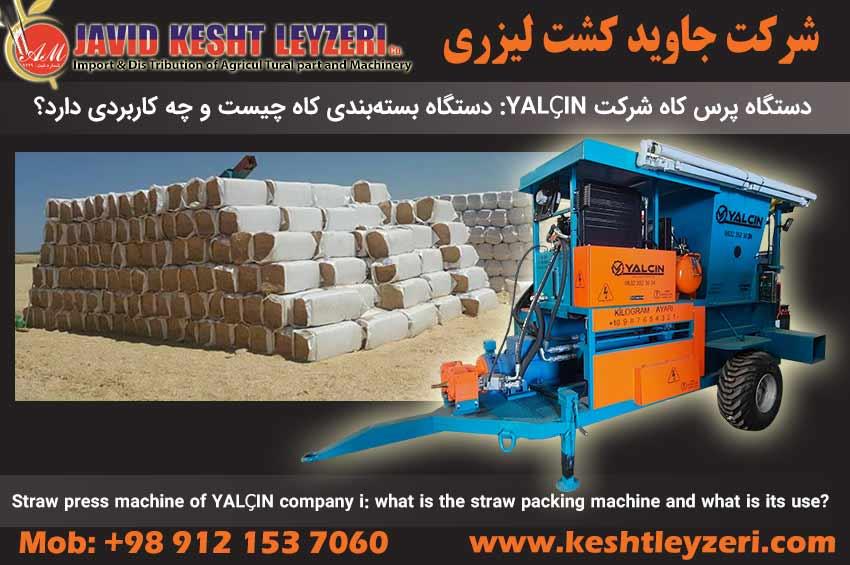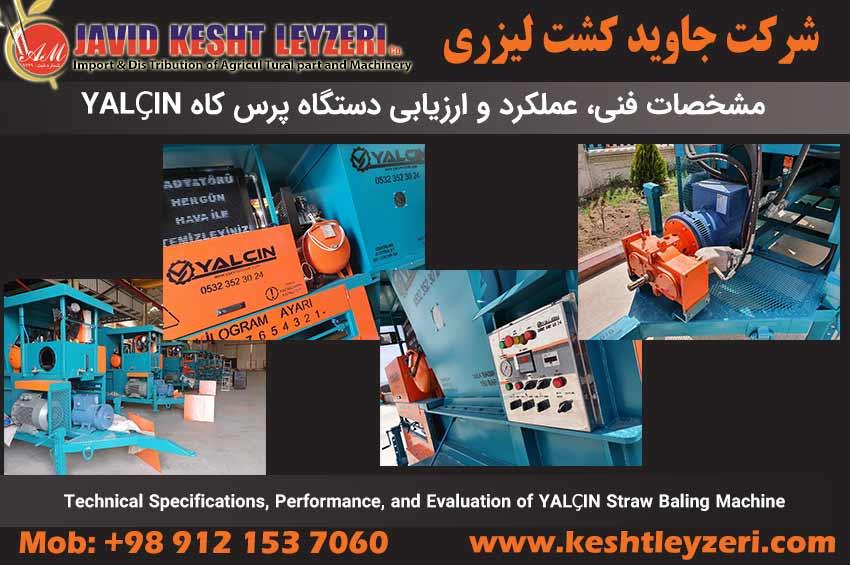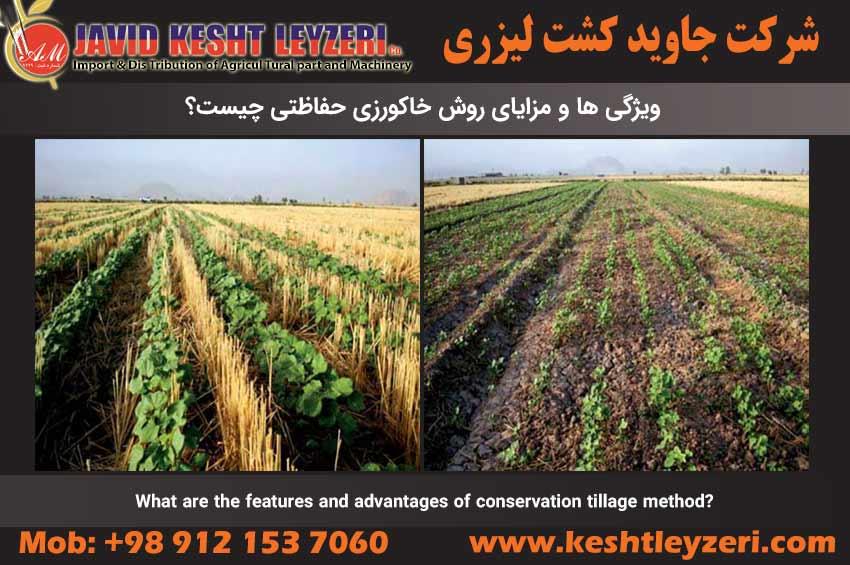
What are the features and advantages of conservation tillage method?
javid keshtleyzeri Co.ltd
List of contents of this section:
What are the characteristics of the low tillage method?
What are the characteristics of conventional tillage method?
What are the features and benefits of conservation tillage methods?
Conservation tillage methods are divided into two main categories:
Low tillage (indirect planting):
This method includes all tillage methods that use fewer operations than conventional methods or less mechanical energy.
Pen and spring plows, plate discs, and compound tillers are among the tools used in this method.
The purpose of this method is to create a suitable substrate for planting seeds with less energy and fewer tillage operations.
No tillage (direct planting):
This method includes all tillage methods that are done without additional tillage and by preserving plant residues.
The purpose of this method is to reduce the density of agricultural tools and machinery, save fuel, prevent water and wind erosion, increase the ability to store and infiltrate water in the soil, reduce useless evaporation, and keep plant residues on the soil surface instead of burning them.
Each of these methods has its advantages and limitations, and the choice of the best method depends on soil, climatic, and farm management conditions.
What are the characteristics of the low tillage method?
The low tillage method is a conservation tillage pattern that has the following features:
Low displacement of soil: In this method, minimal displacement of soil is done, which preserves the structure and vital components of the soil. This issue reduces the drop in permeability and preserves the biological activities of the soil.
Reducing the traffic of cars: by avoiding the frequent traffic of cars on the ground, the damage to the soil structure is reduced and the density of the land is improved.
Permanent cover on the soil: Using a permanent cover such as plant remains or different software as a soil cover reduces surface evaporation and preserves soil moisture.
Improving soil quality: By reducing the continuity of deep tillage and using surface tillage methods, soil quality increases and the level of water and soil pollution decreases.
Optimum use of water: This method helps in optimal use of water in agriculture by maintaining soil moisture and reducing surface evaporation.
Optimum use of fertilizer: By reducing the need for deep tillage and using organic materials, the use of fertilizers is managed more optimally.
These features are generally applied in order to protect the soil, increase productivity and reduce negative economic and environmental impacts.
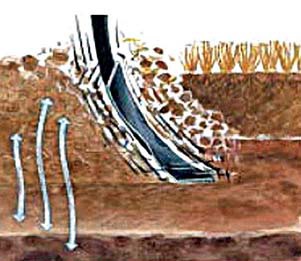
Image of low tillage method
What are the characteristics of conventional tillage method?
Conventional tillage or deep tillage is known for the following features:
Large displacement of soil: In this method, tools and machines are used for large displacement of soil volume, which may lead to changes in the structure of the earth.
Heavy traffic on the soil: Repeated use of machinery and tractors on the ground causes pressure and heavy traffic on the soil, which may lead to soil pressure and compaction.
Uncovered land: In this method, vegetation or plant remains are usually not used on the land, which leads to an increase in surface evaporation and heat difference in the soil.
Degradation of soil fertility: due to thermal differences, low rotation of plants and frequent use of land for agricultural cultivation, soil fertility decreases.
High consumption of water: With high movement of soil and frequent movement of machinery, water consumption increases and this may lead to water shortage problems.
These characteristics indicate that the conventional tillage method may cause negative effects on soil quality, water consumption and the environment, and for this reason conservation tillage methods with various advantages have been introduced.
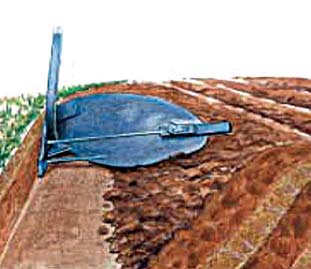
What are the features and benefits of conservation tillage methods?
Removal of plowing operations with iron bulls: In these methods, plowing operations with iron bulls have been eliminated.
Preventing the burning of plant residues: the implementation of conservation tillage prevents the burning of plant residues and damage to the soil structure.
Use of the previous crop residue stacks for seed planting: The remaining stacks from the previous crop are used as the seed planting substrate in the next crop.
Maintaining more soil moisture: These methods help to maintain more soil moisture by reducing surface evaporation.
Reduction of soil surface heat: In hot summer days, despite the residue cover, the soil surface heat is lower than conventional tillage methods.
Increasing soil organic matter: The continuation of these methods leads to an increase in soil organic matter and improving its permeability.
Reducing the use of chemical fertilizers: The use of chemical fertilizers is reduced to a minimum in these methods.
Reducing the consumption of pesticides: the consumption of herbicides and pesticides is significantly reduced.
Reduction of water consumption: reduction of water consumption per hectare per dry matter produced increases the efficiency of water consumption.
Increased working speed: The tools associated with these methods have higher working speed and wider working width, which leads to higher farm efficiency.
Reduction of soil permeability: By removing deep tillage, soil permeability may be reduced, which can be solved by using undercutting operations.
Creating a suitable substrate for planting: These methods help to make the land more productive by creating a suitable substrate for planting seeds and fertilizers in one step.
Reduction of seed consumption: higher precision in the use of these methods leads to a significant reduction of seed consumption.
Economic benefits: Although some associated implements are more expensive, reducing the number of tractor and implement trips saves energy, time and money.
Special conditions such as high soil moisture and excessive dryness: some protective tillage tools can perform land preparation and crop planting operations in special conditions such as high soil moisture or excessive dryness.
Long-term effects: The benefits of these methods appear over time and require patience and follow-up.
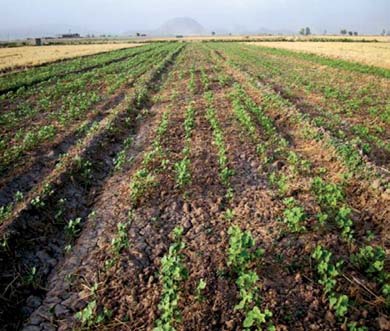
Soil grading in conventional cotton cultivation
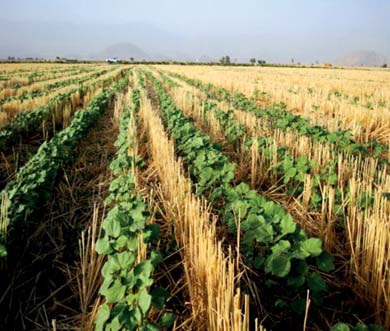
Very green percentage of cottone in no tillage that needs to be thinned





